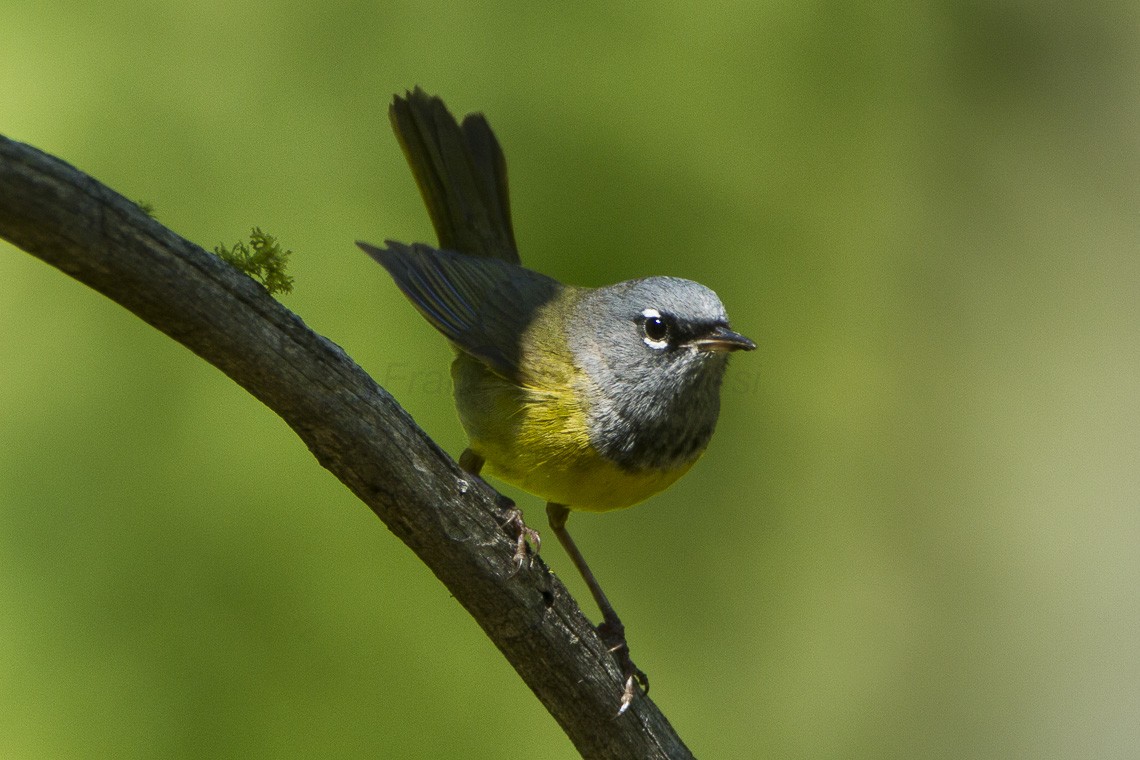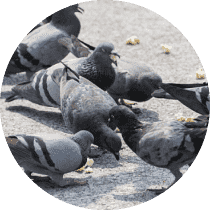Macgillivray's Warbler
A species of Yellowthroats Scientific name : Geothlypis tolmiei Genus : Yellowthroats
Macgillivray's Warbler, A species of Yellowthroats
Botanical name: Geothlypis tolmiei
Genus: Yellowthroats
Content
Description People often ask General Info
 Photo By Francesco Veronesi , used under CC-BY-SA-2.0 /Cropped and compressed from original
Photo By Francesco Veronesi , used under CC-BY-SA-2.0 /Cropped and compressed from original Description
MacGillivray's warbler (Geothlypis tolmiei) is a species of New World warbler. These birds are sluggish and heavy warblers, preferring to spend most of their time on, or near the ground, except when singing. The MacGillivray's warbler was named by John James Audubon in honor of Scottish ornithologist William MacGillivray, although the proper credit to its discovery goes to John Kirk Townsend. The specific name was given in honor of William Fraser Tolmie. Adult MacGillivray's warblers are an olive-green color on their upperparts and dull yellow below. Males have black heads and breasts, while females and immature birds have drab light gray heads; both males and females have broken white eye-rings. The song is a series of repeated two-note phrases, gradually increasing in volume, ending with two single notes: jeeter jeeter jeeter JEETER JEETER jeet jeet. MacGillivray's warblers are very similar to their eastern counterpart, the mourning warbler, the primary difference between the two species being the mourning warbler's lack of an eye-ring. Measurements: Length: 3.9-5.9 in (10-15 cm) Weight: 0.3-0.5 oz (9-13 g) Wingspan: 7.5 in (19 cm) MacGillivray's warblers are migratory and spend their summers in temperate forests in the western United States, and in boreal forests of west Canada. In autumn, these birds migrate to Central America, where they stay in temperate shrublands for the winter. 
Size
13 cm (5.25 in)
Colors
Black
Green
Yellow
Bronze
Gray
Life Expectancy
9 years
Nest Placement
Shrub
Clutch Size
2 - 6 eggs
Feeding Habits
Macgillivray's Warbler predominantly consume insects and other arthropods, foraging mainly low within 3 feet of the ground in dense foliage and occasionally up to 6 feet. Diet includes beetles, bees, ants, moths, and their larvae. Rarely, macgillivray's Warbler may drink sap.
Habitat
Macgillivray's Warbler's habitat spans dense undergrowth in coniferous and mixed forests, often thriving in post-disturbance areas like wildfire recovery zones and clearcuts. Essential to its habitat preference is a prominent understory, particularly near water in riparian thickets lush with shrubs. Macgillivray's Warbler adapts to different vegetation types, from lowland to high-elevation chaparral, favoring similar dense habitats throughout its migration and wintering periods.
Nest Behavior
The timing of nest building by macgillivray's Warbler occurs during their breeding season. After constructing the nest, the female lays her eggs and along with the male, they engage in parental care which includes incubation of the eggs and feeding the young.
Nest Characteristics
Macgillivray's Warbler constructs its nest low in shrubs, typically at a branch fork. The female weaves a cup-shaped nest using grass, bark, leaves, and straw, with an inner lining of soft materials like grasses, root fibers, and hair. The nest averages 5 inches in width with an interior cup about 2 inches wide and 1.6 inches deep.
Dite type
Insectivorous
People often ask
General Info
Feeding Habits
Bird food type
Bird Feeder Type

Ground
Sounds
Call
Recording location: Mexico
Song
Recording location: United States
Behavior
Macgillivray's Warbler display noteworthy territorial and reproductive behaviors. Upon arrival at breeding grounds, males can be observed singing from prominent perches to establish territory and attract mates, with females joining later. Both sexes exhibit territorial aggression, defending approximately 2 to 4-acre areas, possibly more in some cases. Courtship behaviors are not well-documented. However, once paired, females exclusively undertake nest construction, while both partners collaborate in incubation and rearing of young—a testament to the shared roles in brood care.
Species Status
Not globally threatened.
Scientific Classification
Phylum
Chordates Class
Birds Order
Perching birds Family
New world warblers Genus
Yellowthroats Species
Macgillivray's Warbler